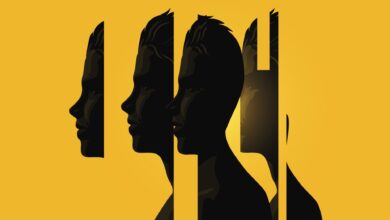Story: Maritza Manresa
Headaches are one of the most common ailments people complain about, from a simple, just a bit annoying headache to those horribly blinding migraine headaches that seem to last forever. Just about everybody has suffered from a headache at some point in their life. According to the National Headache Foundation, over forty-five million people in the United States suffer from recurring, chronic headaches and of the forty-five million twenty-eight million suffer from migraines. Often, the headache’s cause could be quite simple, such as not enough sleep, too much exposure to the sun, or stressing over something. But some people, however, suffer from intense and persistent headaches.
One of the biggest misconceptions about headaches is that the brain is hurting, because that is what it may feel like. However, the truth of the matter is that, although the brain is capable of telling when other parts of the body are hurting, the brain itself is not capable of experiencing pain. Thus the pain that one feels, called a headache, most often is pain happening in the blood vessels, nerves, and muscles around the neck and head. When these blood vessels or muscles swell or tighten they can put pressure on the surrounding nerves which in turn send a message of pain to the brain, thus causing a headache.
If one is going to be dealing with headaches, why not find out what will make a headache go away or just even make it less painful? One might want to have a better understanding of what the different types of headaches are, what causes headaches, and what triggers headaches. There are two types of headaches, primary and secondary. A primary headache is an actual medical condition, not a headache caused by another medical condition or a symptom of another medical condition. Primary headaches are triggered either by environmental conditions or sometimes by dietary intake. Primary headaches include migraines, cluster headaches, and muscular-skeletal headaches – most commonly known as tension headaches. According to Dr. Marlyn Patterson-Lake, Ocala Health Neurology, what causes a headache is not the same as what triggers a headache, as it is the case with secondary headaches. Secondary headaches are actually caused by other medical disorders such as brain tumors, head injuries, and sinus and allergy problems rather than triggered by something.
Migraines
One of the most feared, because of its intensity, is a migraine headache. A migraine headache is commonly described as a throbbing, painful headache mostly concentrated on one side of the head. So, who gets migraines? Statistics show that women are three times more likely to get migraines than men. However, in children migraines occur just about the same in boys and girl up until reaching puberty, when girls become more prone to migraines than boys because of the changes in hormones. Additionally, migraines tend to be more common in individuals who suffer from asthma, depression, and anxiety.
Unlike any other type of headache, people who suffer from migraines may experience some warning signs before the migraine actually sets in. Some of these warning signs include the sense of bad tastes or smells, mood changes such as depression and irritability, and even feeling tense and tired for no reason at all. It is very common for a migraine headache pain to radiate toward the temple, forehead, and eyes. “Migraines can cause nausea, vomiting, and vision problems such as sensitivity to light,” said Dr. Lake. The onset of a migraine headache can be triggered by hormonal changes, lack of food or drink, anxiety or stress, and environmental factors such as exposure to strong flickering lights. Migraine headaches can be so intense that it will keep a person from performing normal everyday tasks. Migraine headaches are not easy to get rid of and can last hours or even days.
Tension Headaches
Tension headaches are the most common type of headaches not only in adults, but also in adolescents. Approximately thirty to eighty percent of the adult population in the United States suffers from tension headaches. These headaches, which are commonly associated with stress, can last anywhere from thirty minutes to several days. Characteristically, the pain is a throbbing pain and affects the front, top, or sides of the head. Although the intensity of the pain may vary throughout the day, the pain is almost always present until it finally subsides. Tension headaches can be caused by tightened muscles in the back of the neck and scalp which could be caused by poor posture, fatigue, or even overexertion. Additionally, tension headaches can also be caused by common sources of internal or external stressors such as family, friends, social relationships, school, and work.
Cluster Headaches
Cluster headaches get their name because these headaches occur like the name says, in clusters. These headaches tend to happen on a daily basis for extended periods of time, sometimes for a week or longer and they seem to occur at the same time, day or night, often waking up the person in the middle of the night. According to the Mayo Clinic, the cause of cluster headaches is not really certain but it is believed that it may be the result of a sudden release of the chemicals histamine and serotonin in the brain. Interestingly enough, these headaches tend to run in families, but they may also be triggered by changes in sleeping habits, and even certain medications such as nitroglycerine, which is used for heart disease.
People who experience new headaches that last about two or more days should be checked by a health care professional. Although, for the most part people are able to eventually get rid of headaches with plenty of rest and either over the counter or prescription medication, some people have found relief with alternative methods. For instance some people have found relief with biofeedback technics, acupuncture, and chiropractic treatment.






